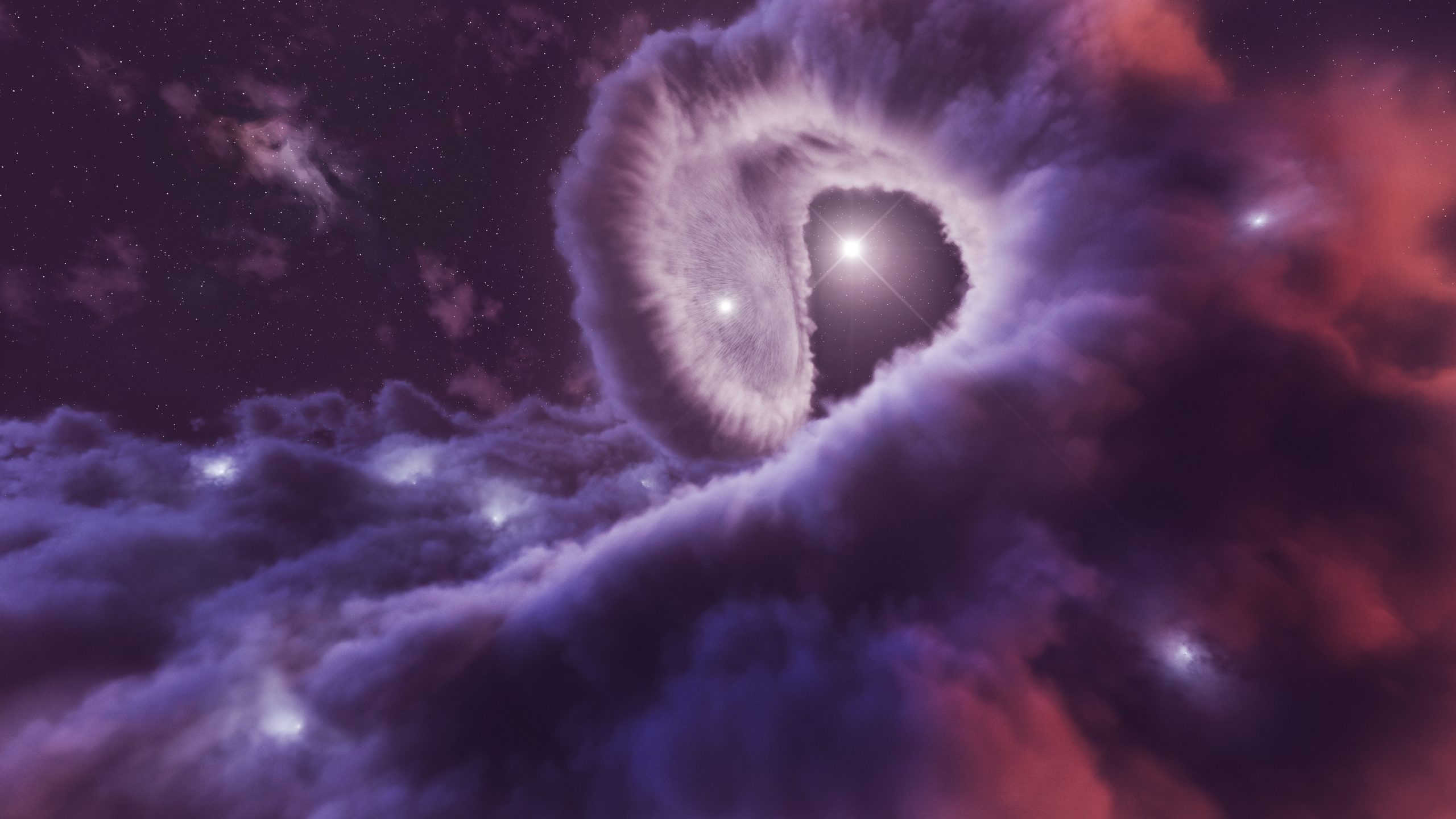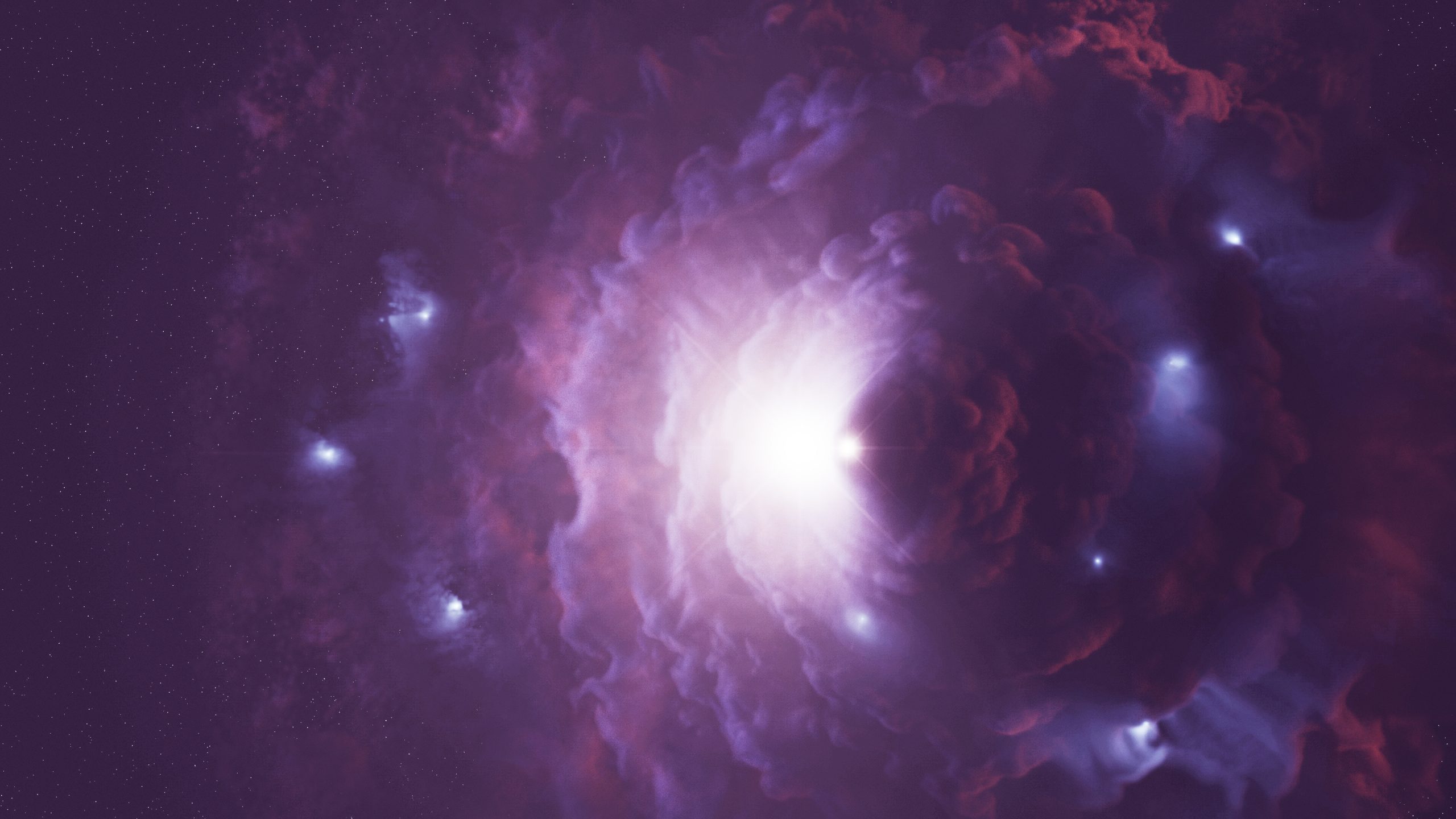In the orbit of two giants
Eta Carinae, approximately 7500 light-years from Earth, has everything that an astronomer could want. First, there’s the nebula surrounding Eta Carinae. The so-called Homunculus Nebula is still growing. It has the shape of two opposing cones, whose tips originate in Eta Carinae, and measures more than 0.5 light-years from end to end. From the propagation rate of up to 700 km/s, the existence of the nebula can be traced back to an outburst in the 1840s.
Second, it is not just a single star, but a binary system consisting of two blue giants. The primary star has a mass of 100 solar masses and is thus one of the most massive stars in the Milky Way. But even the secondary star is not a lightweight. It is 30 times heavier than our home star.
Both stars also orbit each other once every 5.5 years at a very close distance. Sometimes they come as close as the Sun and Mars, then move as far apart as the Sun and Uranus. At a cosmic scale, however, that is still just a stone’s throw away, and thus they inevitably each hurl large portions of their mass at each other in the form of dense, supersonic stellar winds made from charged particles. In this way, in only about 5000 years, the primary star loses as much mass as our Sun has in total. The secondary star propels a stellar wind moving at about eleven million kilometer per hour (corresponds to at least one percent of the speed of light).
Where the two stellar winds meet each other, a massive shock front is created, where the material of the wind is heated to extreme temperatures. At around 50 million degrees Celsius, it shines in X-ray light. The wind particles are not hot enough, however, for the emission of gamma radiation. Nevertheless, the binary system generates gamma radiation up to an energy of 400 gigaelectron-volts (GeV) – around 100 billion times more than the energy of visible light, as a research team led by the German Electron Synchrotron (DESY) has proven using the special telescope HESS in Namibia.
“Analysis of the gamma radiation measured by HESS and the satellites shows that it can best be interpreted as the product of highly accelerated atomic nuclei,” explains DESY doctoral candidate Ruslan Konno, who published an accompanying study together with scientists from the Max Planck Institute for Nuclear Physics in Heidelberg. “This would also make the shock regions of colliding stellar winds a new type of natural particle accelerator for cosmic rays.”
The researchers hope to be able to use HESS, named after the discoverer of cosmic rays, Victor Franz Hess, and also, in particular, the Cherenkov Telescope Array (CTA), the next generation gamma radiation observatory being constructed in the Chilean highlands, to study this phenomenon more closely and to make more similar discoveries.

